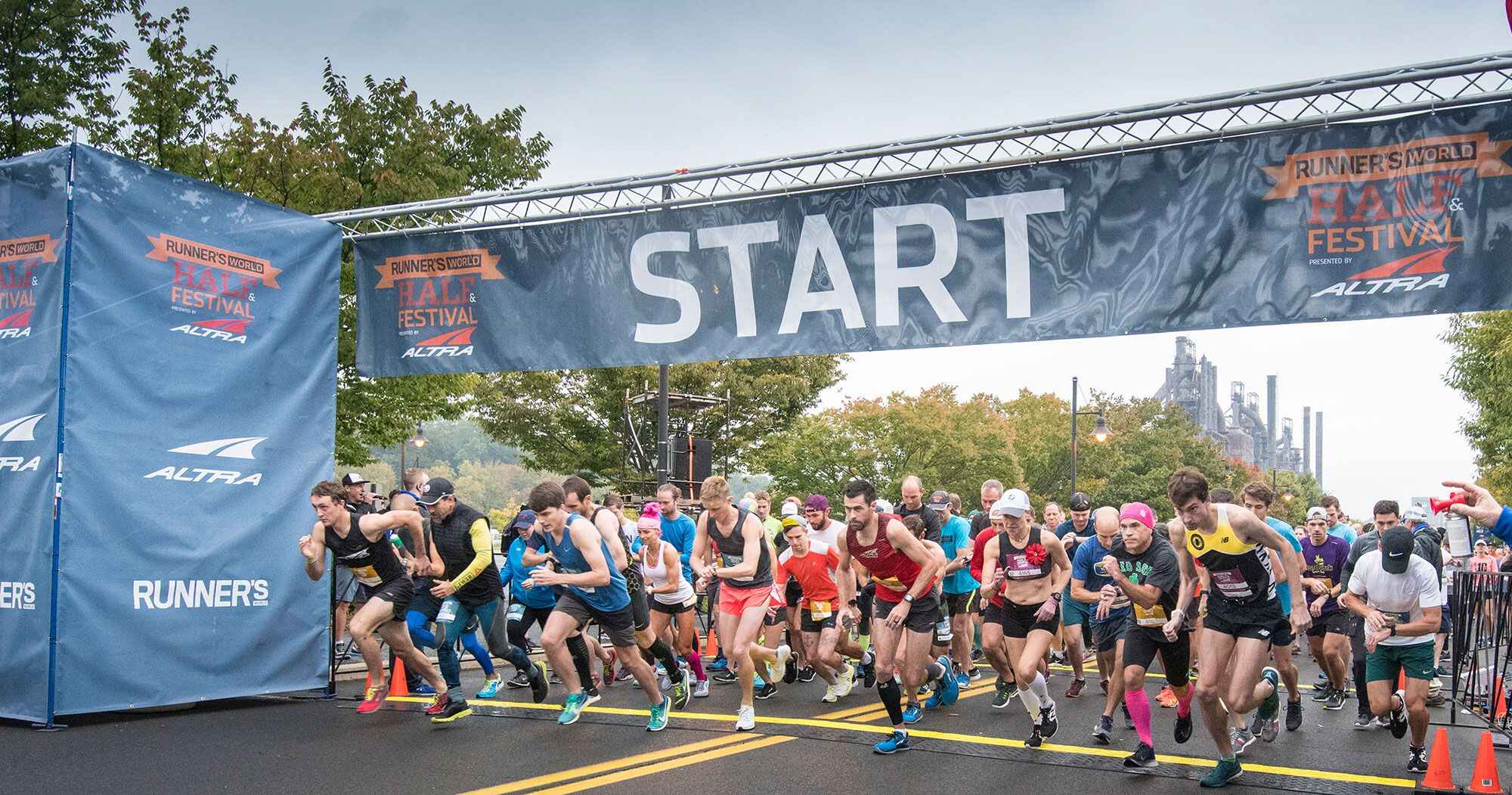Home>Misc>Featured>How Many Times A Day Should You Train For 5K Run


Featured
How Many Times A Day Should You Train For 5K Run
Modified: January 2, 2024
Find out the optimal training frequency for a 5K run with our featured guide. Maximize your potential without overexertion.
Introduction
Training for a 5K run requires careful planning and consideration. One of the key aspects to consider is how often you should train each day. Determining the right training frequency can have a significant impact on your performance, as well as your ability to avoid injury and achieve your running goals.
There is no one-size-fits-all answer to how many times a day you should train for a 5K run. The optimal training frequency will depend on a variety of factors, including your current fitness level, running experience, schedule, and overall health. It’s important to remember that training frequency needs to be balanced with rest and recovery to prevent overtraining and allow your body to adapt and improve.
In this article, we will explore the factors to consider before determining your training frequency, and provide general guidelines for different training levels. Whether you are a beginner, intermediate, or advanced runner, understanding the right training frequency for you will help optimize your performance and ensure long-term success in your 5K training journey.
Factors to Consider Before Determining Training Frequency
Before deciding how often you should train for a 5K run, there are several important factors that you should take into consideration. These factors can help you determine the optimal training frequency that suits your individual needs and goals:
- Current Fitness Level: Your current fitness level plays a crucial role in determining your training frequency. If you are a beginner or have been relatively inactive, it is important to gradually build up your endurance and stamina. Starting with a lower training frequency and gradually increasing it over time can help prevent injuries and allow your body to adjust to the increased demands of running.
- Running Experience: Your level of running experience also influences how often you should train. If you are new to running, your body may need more time to recover and adapt to the physical demands of running. As you gain more experience and become familiar with the demands of a 5K run, you may be able to handle a slightly higher training frequency.
- Schedule and Time Constraints: Another important factor to consider is your schedule and time constraints. It’s important to find a balance between training frequency and other commitments in your life. If you have a busy schedule, you may need to allocate fewer training days per week but make each session more intense. On the other hand, if you have more flexibility, you may be able to spread out your training sessions throughout the week.
- Overall Health: Your overall health and physical condition should also be taken into account when determining your training frequency. If you have any pre-existing injuries, medical conditions, or limitations, it is important to consult with a healthcare professional or a running coach to determine the appropriate training frequency that aligns with your health needs.
- Goals and Performance Targets: Lastly, your goals and performance targets for the 5K run should be considered. If you are aiming for a specific time or aiming to improve your personal best, you may need to increase your training frequency to allow for more focused and targeted workouts. However, it is important to strike a balance between pushing yourself and avoiding burnout or overtraining.
By carefully considering these factors, you can determine the training frequency that works best for you and helps you achieve your 5K running goals. Remember, the key is to listen to your body, be mindful of your current capabilities, and make adjustments as needed to ensure a safe and effective training routine.
General Guidelines for Training Frequency
While the ideal training frequency for a 5K run may vary depending on individual factors, there are some general guidelines that can help you determine a starting point. These guidelines provide a framework to structure your training routine and ensure that you are effectively preparing for your 5K run:
- Beginner Runners: If you are new to running or have minimal running experience, it is recommended to start with a training frequency of three to four times per week. This allows your body to gradually adapt to the demands of running and reduces the risk of overtraining or injury. Start with shorter distances and gradually increase the duration and intensity of your runs as your fitness improves.
- Intermediate Runners: For runners who have some experience and a base level of fitness, a training frequency of four to five times per week is often suitable. This allows for a good balance between training stimulus and adequate recovery. Focus on incorporating a combination of shorter, moderate intensity runs, as well as longer endurance runs to build both speed and stamina.
- Advanced Runners: Advanced runners who have a higher level of fitness and running experience can handle a higher training frequency. Typically, training five to six times per week is common for advanced runners. This may include a mix of speed workouts, hill training, long runs, and recovery runs. It’s important to ensure that you allow for adequate rest and recovery days to prevent overtraining and maintain optimal performance.
Remember, these are general guidelines and should be adjusted based on your own needs and capabilities. It’s essential to listen to your body and pay attention to any signs of fatigue or injury. If you start to feel excessively tired, experience persistent pain, or notice a decline in performance, it may be a sign that you need to decrease the training frequency or take additional rest days.
Additionally, cross-training activities such as strength training, flexibility exercises, and restorative activities like yoga or stretching can help enhance your overall fitness and decrease the risk of overuse injuries. Incorporating these activities into your weekly routine can provide a well-rounded approach to your training and contribute to your success in the 5K run.
By following these general guidelines and making adjustments based on your individual needs, you can establish a training frequency that sets you up for success in your 5K run and helps you reach your running goals.
Beginner Training Frequency Recommendations
If you are new to running or have minimal experience, it’s important to start your 5K training journey with a suitable training frequency. The goal is to gradually build endurance, improve fitness, and avoid injury. Here are some recommendations for beginner runners:
- Train 3-4 Times per Week: As a beginner, it’s advisable to start with a training frequency of three to four times per week. This allows your body to adapt to the new demands of running while providing enough recovery time. Aim to have at least one rest day between each running session to give your muscles time to recover and prevent overuse injuries.
- Focus on Duration rather than Distance: Instead of focusing on running long distances, beginners should prioritize gradually increasing the duration of their runs. Start with shorter distances and gradually increase the duration of your runs by a few minutes each week. This approach helps build endurance without putting excessive strain on your joints and muscles.
- Vary Your Workouts: Incorporate a mix of different workouts into your weekly routine to keep things interesting and challenge your body in different ways. Include a combination of steady-paced runs, interval training, and easy recovery runs. Varying your workouts not only helps prevent boredom but also helps improve your overall fitness and running performance.
- Listen to Your Body: Pay close attention to how your body feels during and after runs. If you experience sharp pain, extreme fatigue, or discomfort, it’s important to take it easy and allow for additional rest. Beginners are more prone to overuse injuries, so it’s crucial to listen to your body’s signals and not push too hard too quickly.
- Gradually Increase Training Intensity: As you progress in your training, gradually increase the intensity of your runs by incorporating intervals or hill workouts. These workouts challenge your cardiovascular system and help you build speed and endurance. However, it’s essential to do these workouts at a pace that is challenging yet manageable for your current fitness level.
By following these beginner training frequency recommendations, you can establish a solid foundation and gradually improve your running abilities. Remember, patience is key, and progress takes time. Focus on consistency, gradual progression, and maintaining good form, and you will be well on your way to completing your first successful 5K run.
Intermediate Training Frequency Recommendations
For runners who have some experience and a base level of fitness, an intermediate training frequency is recommended to continue progressing in their 5K training. Building upon the foundation established in the beginner stage, here are some recommendations for intermediate runners:
- Train 4-5 Times per Week: As an intermediate runner, aim for a training frequency of four to five times per week. This increased frequency allows for more training stimuli and continued improvement in fitness. Ensure to have at least one or two rest days each week to allow for adequate recovery.
- Incorporate Different Types of Runs: Your weekly training plan should include a variety of types of runs to develop different aspects of your running. Include steady-paced runs to build endurance, interval runs to improve speed, and tempo runs to boost lactate threshold. This mix of workouts helps to challenge your body in different ways and enhance overall performance.
- Gradually Increase Mileage: As an intermediate runner, you can start gradually increasing your weekly mileage. Add a longer run to your routine to build endurance. Increase the distance of your longest run by about 10% each week, ensuring to listen to your body and not overexert yourself. Balancing mileage increase with rest and recovery is crucial to avoid injuries.
- Cross-Train and Strength Train: Incorporating cross-training activities, such as cycling or swimming, can provide additional cardiovascular benefits while reducing the impact on your joints. Additionally, strength training exercises, focusing on core and leg muscles, can improve your running efficiency and prevent muscle imbalances and injuries.
- Practice Recovery Strategies: As the intensity and frequency of your runs increase, paying attention to recovery becomes even more critical. Include active recovery sessions, foam rolling, stretching, and proper nutrition to help your body recover and reduce the risk of injuries. Adequate sleep and hydration are also essential for optimal recovery.
It’s important to remember that as an intermediate runner, pushing your limits is essential for growth, but it’s equally important to listen to your body. If you experience recurring pain or signs of overtraining, it’s crucial to adjust your training accordingly and seek guidance from a running coach or healthcare professional.
By following these intermediate training frequency recommendations and maintaining a balanced approach, you can continue to progress in your 5K training and set yourself up for continued improvement and success.
Advanced Training Frequency Recommendations
As an advanced runner, you have a higher level of fitness and experience, allowing you to push your limits in your 5K training. Here are some training frequency recommendations to help advanced runners continue to improve their performance:
- Train 5-6 Times per Week: Advanced runners typically have a higher training frequency. Aim to train five to six times per week, allowing for a good balance between training stimulus and recovery. Designate at least one or two rest days to allow your body to rest and rebuild.
- Incorporate Speed Workouts: To improve your speed and running efficiency, include specific speed workouts in your training routine. These could include intervals, fartlek runs, or tempo runs. These high-intensity workouts challenge your cardiovascular system and enhance your anaerobic capacity.
- Long Runs: Long runs are essential for building endurance and mental toughness. Include a weekly long run in your training plan, gradually increasing the distance over time. However, it’s crucial to balance the distance increase with proper rest and recovery to avoid overtraining and injuries.
- Hill Training: Incorporate hill workouts into your training routine to increase strength and power. Hill repeats or hill sprints help improve your leg muscles’ strength and develop the ability to maintain speed on inclines, ultimately enhancing your overall running performance.
- Maintain Variation: While consistency is important, maintaining variation in your training is essential to prevent plateaus and keep your body challenged. Alternate between different types of runs, including speed workouts, endurance runs, recovery runs, and cross-training activities.
- Recovery Strategies: As an advanced runner, proper recovery strategies are crucial to maintain performance and prevent injuries. Incorporate rest days, active recovery sessions, self-massage techniques, and nutrition optimization into your routine. Focus on getting enough sleep and staying hydrated to support your body’s recovery process.
Advanced runners should be aware of their body’s signals and be flexible with their training plan. As you push your boundaries, it’s important to listen to your body and adjust your training accordingly. Seeking guidance from a running coach or healthcare professional can help you fine-tune your training plan and avoid overtraining or burnout.
By following these advanced training frequency recommendations and consistently challenging yourself, you can continue to push your limits and achieve your running goals in the 5K distance.
Balancing Training Frequency with Rest and Recovery
When determining your training frequency for a 5K run, it’s crucial to strike a balance between training and allowing your body to rest and recover. Finding the right balance is key to avoiding overtraining, reducing the risk of injuries, and maximizing your performance. Here are some important considerations for balancing your training frequency with rest and recovery:
- Include Rest Days: Rest days are just as important as training days. They allow your muscles, bones, and connective tissues to repair and adapt to the stress placed on them during workouts. Plan for at least one or two rest days per week, giving your body time to recover, rebuild, and replenish energy stores.
- Alternate Intensity: Vary the intensity of your training sessions throughout the week. Alternate between hard and easy days to give your body a break from intense workouts and reduce the risk of overuse injuries. This approach allows for active recovery while still maintaining training consistency.
- Gradually Increase Training Volume: When increasing your training frequency, it’s important to do so gradually. Gradually increase your weekly mileage or training volume to allow your body time to adapt and minimize the risk of overuse injuries. Sudden and significant increases in training volume can lead to fatigue, burnout, and potential injuries.
- Listen to Your Body: Your body provides valuable feedback, so it’s essential to listen to it. Pay attention to any signs of fatigue, persistent pain, or decreased performance. Adjust your training frequency or intensity if needed and don’t be afraid to take extra rest days when necessary. Pushing through excessive fatigue or ignoring pain signals can lead to more serious injuries and setbacks.
- Implement Active Recovery: Incorporate active recovery strategies into your training routine. Engage in light exercise, such as gentle jogging, walking, swimming, or cycling, on your rest days to promote blood flow, muscle relaxation, and recovery. Active recovery helps flush out metabolic waste and reduces muscle soreness.
- Take Advantage of Restorative Activities: Include restorative activities in your routine, such as yoga, stretching, foam rolling, or massage therapy. These activities help relax your muscles, increase flexibility, improve range of motion, and reduce muscle tension, contributing to faster recovery and injury prevention.
By balancing your training frequency with proper rest and recovery, you give your body the best chance to adapt, grow stronger, and improve performance. Remember, recovery is an essential part of the training process, and neglecting it can hinder progress and increase the risk of injury. Listen to your body, be mindful of its needs, and establish a training routine that allows for meaningful recovery, helping you achieve optimal performance in your 5K run.
Importance of Listening to Your Body
When it comes to training for a 5K run, one of the most important factors for success is listening to your body. Your body provides valuable feedback, signals, and warning signs that can guide your training decisions and help prevent injuries. Here’s why listening to your body is crucial:
- Preventing Overtraining: Pushing yourself too hard without proper rest and recovery can lead to overtraining. Overtraining can manifest in various ways, including persistent fatigue, decreased performance, mood swings, increased susceptibility to illness, and chronic injuries. By listening to your body’s signals of fatigue and adjusting your training accordingly, you can prevent overtraining and maintain optimal performance.
- Avoiding Injury: Ignoring pain or discomfort can put you at risk of sustaining injuries. It’s important to differentiate between the normal discomfort associated with pushing your limits and the pain that indicates an injury. By paying attention to your body’s warning signs, such as sharp pain, swelling, or localized discomfort, you can address any potential issues early on and prevent more serious injuries from occurring.
- Finding Balance: Listening to your body helps you find a balance between pushing yourself and prioritizing rest and recovery. It allows you to gauge the intensity, duration, and frequency of your training sessions based on your body’s current capabilities. This balance is critical for long-term progress, consistent improvement, and overall well-being.
- Individualizing Your Training: No two individuals are the same. Each runner has unique strengths, weaknesses, and responses to training. By listening to your body, you can tailor your training plan to your specific needs and adapt it as necessary. This individualized approach optimizes your training and helps you achieve your personal running goals.
- Improving Performance: Paying attention to your body allows you to fine-tune your training approach, making adjustments based on how your body is responding. This helps you optimize your training, avoid setbacks, and maximize your performance potential. By listening to your body, you can train more effectively and efficiently, leading to better results on race day.
Remember, your body is unique, and it’s important to respect its limits and capabilities. Listening to your body is not a sign of weakness, but rather a proactive approach to take care of yourself and ensure longevity in your running journey. By maintaining a strong connection with your body and being attuned to its needs, you can train smarter, stay injury-free, and achieve sustainable success in your 5K runs.
Conclusion
Determining the right training frequency for a 5K run is essential for achieving your running goals, maintaining optimal performance, and preventing injuries. It is not a one-size-fits-all approach, as it depends on various factors such as fitness level, running experience, schedule, and overall health. Whether you are a beginner, intermediate, or advanced runner, finding the right balance between training and rest is crucial.
Before determining your training frequency, consider factors such as your current fitness level, running experience, schedule, health, and goals. These factors will help guide you in establishing a starting point for training frequency.
For beginners, a training frequency of three to four times per week is recommended. Focus on gradually building endurance and increase training intensity over time. Intermediate runners can aim for a training frequency of four to five times per week, incorporating various types of runs to enhance speed, endurance, and overall performance. Advanced runners can push their limits with a training frequency of five to six times per week, including specific speed workouts, long runs, and cross-training activities to maintain progress and reach peak performance.
It is crucial to balance training frequency with proper rest and recovery. Rest days, active recovery, cross-training, and incorporating recovery strategies are essential for avoiding overtraining, preventing injuries, and allowing your body to adapt and rebuild. Listening to your body is paramount throughout your training journey. Pay attention to fatigue, pain, and signs of overtraining, making necessary adjustments to your training plan.
By finding the right training frequency for you, listening to your body, and maintaining a balanced approach, you can optimize your 5K training and improve your overall running performance. Remember to enjoy the process, be consistent, and celebrate each milestone you reach, as every step brings you closer to achieving your running goals.









